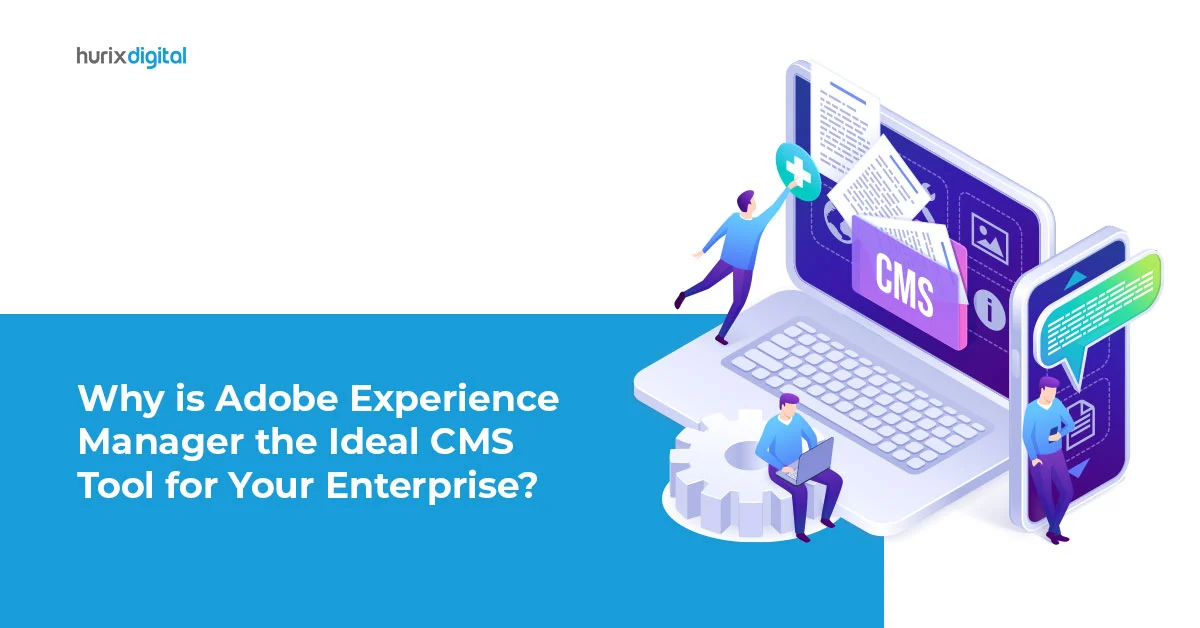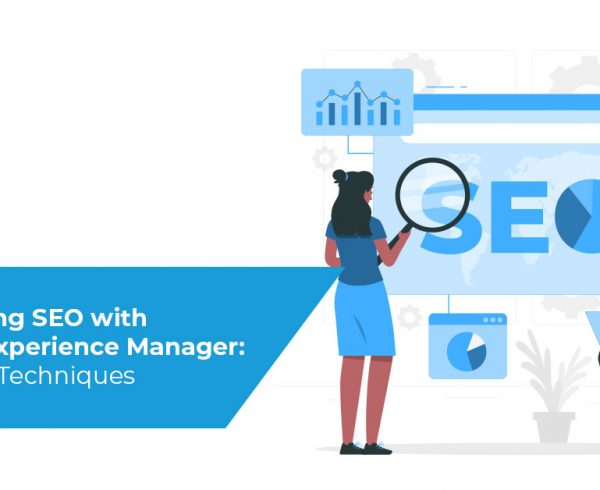Summary
This blog looks at the five key steps to accelerate your digital journey with Adobe Experience Manager and Amazon Web Services. You learn how to define your digital strategy, choose the right AWS structure, and how to leverage AEM and AWS to deliver exceptional experiences to your customers.
Table of Contents:
Introduction
Are you ready to supercharge your digital journey? This blog looks at the five key steps to accelerate digital transformation using the dynamic duo of Adobe Experience Manager (AEM) and Amazon Web Services (AWS).
With AEM’s powerful content management capabilities and the scalability of AWS, you can unlock the true potential of your digital initiatives and deliver exceptional experiences that leave a lasting impact. So, let’s get started and fast-track your digital journey with AEM and AWS!
Also Read: Top 6 Implementation Advantages of Using AEM by Hurix Digital
Top 5 Steps to Accelerate Your Digital Journey With AEM and AWS
Accelerating your digital journey with Adobe Experience Manager (AEM) and Amazon Web Services (AWS) can be a powerful combination. Here are the five steps to drive your organization’s digital transformation
Step 1: Define Your Digital Strategy
Defining your digital strategy is all about setting the foundation for your digital journey with AEM and AWS. It’s like charting a roadmap before you hit the road. Take the time to explore how these platforms can support your digital strategy.
Adobe Experience Manager is a powerful content management system. It allows users to create, manage, and deliver engaging digital experiences. AWS, on the other hand, provides a robust and scalable infrastructure to support your AEM deployment. Together, they enable you to deliver exceptional digital experiences to your customers.
When documenting your digital roadmap, outline the steps and milestones you need to accomplish to achieve your digital goals. This roadmap will guide your digital journey, ensuring everyone in your organization is aligned and working towards the same vision.
Remember, defining your digital strategy is not a one-time thing. It’s an ongoing process that requires continuous evaluation and adjustment. As technology and consumer expectations evolve, so should your strategy. Stay agile, embrace innovation, and be ready to adapt as needed.
Step 2: Choose the Right AWS Structure
Dive into Amazon Web Services (AWS) to find the perfect foundation for your Adobe Experience Manager (AEM) deployment. Think of AWS as a vast playground with many services at your disposal. Your goal is to select the AWS infrastructure that aligns with your specific AEM requirements. It’s like choosing the right tools for the job!
Here are some key considerations to keep in mind –
- The scalability factor: AWS offers Elastic Compute Cloud, which allows you to flexibly scale your compute power up or down based on demand.
- Storage: With Amazon Simple Storage Service (S3), you have a reliable and highly scalable storage solution for your AEM assets. To ensure lightning-fast content delivery, you can leverage Amazon CloudFront, a content delivery network (CDN) that brings your AEM content closer to your end users.
- Cost: AWS provides flexible pricing options, allowing you to optimize your infrastructure costs. Depending on your budget and usage patterns, you can choose from various pricing models.
Step 3: Design an AEM Architecture on AWS
Designing an Adobe Experience Manager architecture on AWS is like creating a blueprint for your digital masterpiece. It’s all about ensuring high availability, fault tolerance, and scalability to handle whatever challenges come your way.
To begin, let’s talk about high availability. AWS offers services like Elastic Load Balancing (ELB), which distributes incoming traffic across multiple instances of AEM. Fault tolerance is another critical consideration. With services like AWS Auto Scaling, you can automatically add or remove instances of AEM based on demand. This ensures that your application can gracefully handle sudden spikes in traffic or adjust to varying workloads.
Automation is your ally in managing your AEM architecture on AWS. Infrastructure-as-code tools like AWS CloudFormation and AWS CDK allow you to define and provision your AEM-managed services in a programmatic and repeatable way.
Security should never be an afterthought. AWS offers a wide range of security services to protect your AEM deployment. For example, AWS Identity and Access Management (IAM) allows you to manage user access and permissions effectively. It also ensures that only authorized people access your system.
Also Read: Maximizing The Power Of AEM For Content Management And Delivery
Step 4: Optimize Security and Performance
Performance-boosting and security-enhancing are crucial to ensure that the Adobe Experience Manager deployment on Amazon Web Services runs at its best.
Caching is a powerful technique that can significantly improve performance. With AWS services like Amazon CloudFront or Amazon ElastiCache, you can cache static content or frequently accessed data closer to your users, reducing latency and speeding up content delivery.
Monitoring is key to understanding how your AEM deployment is performing. Tools like Amazon CloudWatch by AWS allow you to collect and monitor metrics, set alarms, and gain insights into the health and performance of your AWS resources.
Encryption adds an extra layer of security to your AEM deployment. AWS provides services like AWS Key Management Service (KMS) that allow you to encrypt sensitive data at rest or in transit. Furthermore, regular backups are essential to safeguard your data and ensure business continuity.
Step 5: Leverage the AWS Managed Services
AWS-managed services are like having a team of experts taking care of certain aspects of your infrastructure, allowing you to focus on delivering exceptional digital experiences. These services provide pre-configured, ready-to-use solutions that seamlessly integrate with AEM solutions, enabling you to achieve more with less effort.
One of the key managed services you can leverage is AWS Lambda. It allows you to run your AEM backend processes in a serverless environment, eliminating the need to provision and manage servers. Amazon Simple Queue Service (SQS) is another valuable managed service. It enables you to decouple Adobe Experience Manager components and build scalable, distributed systems.
In addition, Amazon Simple Notification Service (SNS) allows you to send notifications to various subscribers or endpoints, keeping them informed about important events or updates. By leveraging these AWS-managed services, you can simplify your operations, increase scalability, and enhance the overall efficiency of your AEM deployment.
Wrapping Up
In conclusion, accelerating your digital journey with the Adobe Experience Manager platform and Amazon Web Services requires careful planning and execution. Following the 5-step guide, you can define your digital strategy, choose the right AWS infrastructure, design an optimized AEM architecture, maximize performance and security, and leverage AWS managed services. These steps pave the way for delivering exceptional digital experiences while ensuring scalability, security, and operational efficiency.
As you embark on this journey, consider partnering with the experts at Hurix Digital for AWS platform management services. Our expertise in managing AWS infrastructures can provide you with the support you need to fully leverage the power of AEM and AWS.
Contact us today and unlock the true potential of AEM and AWS for your organization.









